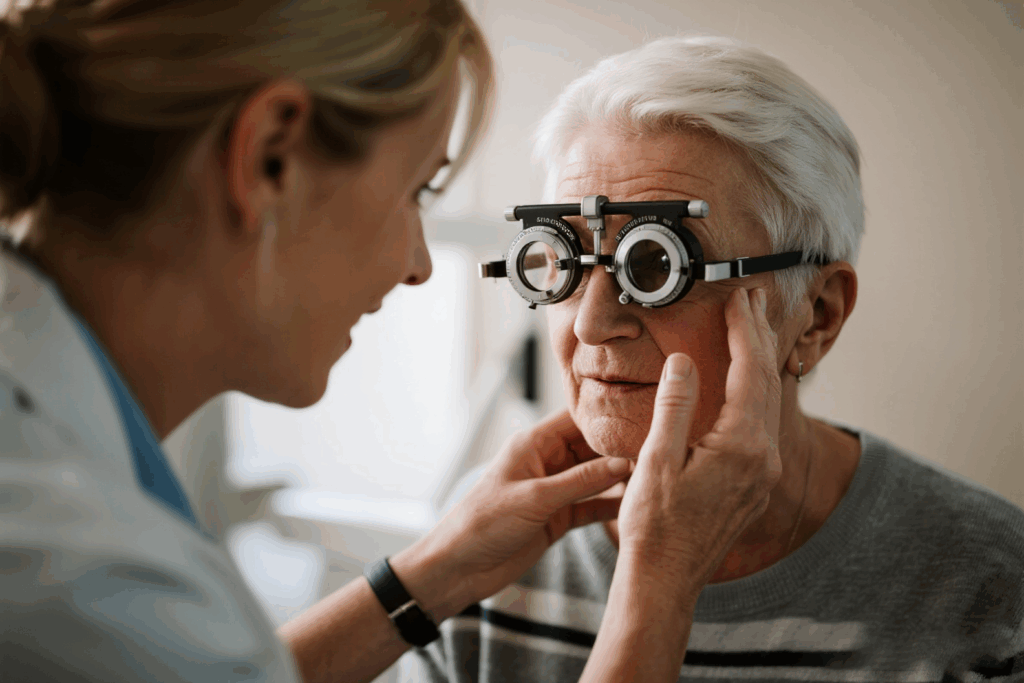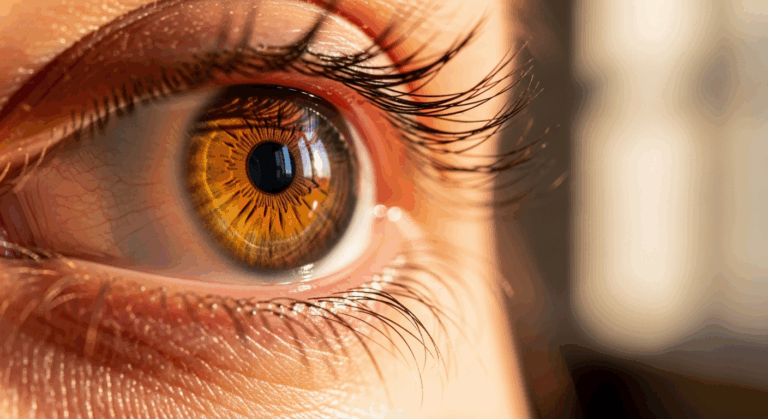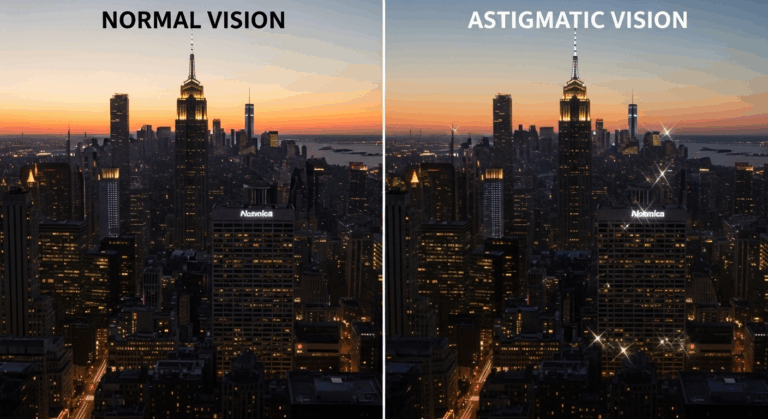If you have astigmatism, you’re probably all too familiar with the tell-tale signs: headlights that look more like starbursts at night, or a general sense of blurriness that corrective lenses can’t seem to fully sharpen. And with that, a nagging question often follows: “Is my astigmatism going to get worse?”

It’s a great question, and one we hear all the time in our clinic. It’s completely natural to worry about your vision changing over time. So today, let’s clear up the confusion and talk honestly about what’s happening with your eyes.
First, let’s use a simple analogy. Think of a perfectly shaped eye as a basketball—smooth and evenly round. When light enters it, it focuses on one single point, creating a sharp, clear image. An eye with astigmatism, however, is shaped more like a football or an egg. This irregular curve causes light to focus on multiple points instead of one, which is why your vision becomes blurry, distorted, or ghosted.
With that picture in mind, we can tackle the big question.
So, Can Astigmatism Get Worse?
The short and simple answer is: Yes, it can.
But before you start to worry, let’s put that into perspective. For most people, any change in their astigmatism is very slow and gradual. It’s not something that typically deteriorates rapidly. Think of it less like catching a cold and more like how you might gradually change height or weight over many years—it’s often just a natural part of your body’s journey.
So, what are the factors that actually cause these changes to happen?
What Causes Astigmatism to Worsen?
Several key “drivers” can be behind a shift in your astigmatism prescription. Let’s break them down.
1. The Natural Aging Process

This is by far the most common reason, and it’s nothing to be alarmed about. Just like the rest of our body, our eyes change as we get older.
- Eyelid Pressure: Your eyelids exert a gentle, constant pressure on the cornea (the clear front part of your eye). Over decades, this pressure can subtly alter the cornea’s shape, leading to minor changes in your astigmatism.
- Lens Changes: The lens inside your eye also changes shape and flexibility as you age. This is the primary cause of presbyopia (the need for reading glasses after 40), but it can also influence your astigmatism.
It’s important to remember this: these age-related changes are usually very slow. You might only notice a small update to your glasses prescription every few years.
2. Eye Conditions and Diseases

In some rarer cases, a more significant or rapid increase in astigmatism can be a sign of an underlying eye condition.
- Keratoconus: This is the one to watch out for. Keratoconus is a progressive disease where the cornea thins and begins to bulge outward into a cone shape. This causes astigmatism to become much more irregular and increase significantly, leading to a noticeable decline in vision. If you find your prescription is changing dramatically in a short period, see an eye doctor immediately.
- Eye Surgery or Injury: Any trauma to the eye or surgery that affects the cornea (like a cataract removal or corneal transplant) can induce or alter astigmatism.
3. What Doesn’t Cause it to Worsen?

There are a lot of myths out there. Let’s bust a few. The following activities, while not great for eye comfort, do not physically change the shape of your eyeball and therefore don’t make astigmatism worse:
- Reading in dim light.
- Staring at a computer or phone screen for too long.
- Wearing the wrong prescription (this will cause eye strain and headaches, but not a structural change).
These habits are more likely to cause temporary eye fatigue, not a permanent change in your astigmatism.
On the Flip Side: Does Astigmatism Go Away?
If astigmatism can get worse, you might wonder if it can get better or even disappear on its own.
The straightforward answer is: No, not for adults.
Because astigmatism is a structural issue—an irregularly shaped cornea or lens—it doesn’t just “heal” itself. You can’t exercise it away. Once you have it as an adult, it’s generally there to stay.
The one exception is in very young children. As a child’s eyes grow and develop, very minor amounts of ‘physiologic’ astigmatism can sometimes decrease. For adults, however, you shouldn’t expect it to resolve on its own.
Fortunately, managing it is straightforward. Astigmatism is very effectively corrected with glasses, toric contact lenses (lenses specially designed for astigmatism), or refractive surgeries like LASIK. These methods don’t “cure” the astigmatism, but they compensate for the eye’s irregular shape, giving you clear, comfortable vision.
What Should You Do? Be Proactive, Not Anxious
Knowing all this, what’s your best course of action?
It all comes down to regular eye exams. This is non-negotiable for good eye health.
Most eye care professionals recommend a comprehensive eye exam every one to two years for adults. If you’re over 40 or have a known eye condition, an annual exam is best. During these check-ups, your optometrist or ophthalmologist can:
- Track changes in your prescription: Ensuring your glasses and contacts are always giving you the best possible vision.
- Screen for underlying conditions: Early detection of issues like keratoconus is critical for successful treatment.
- Offer the best advice: They can recommend the ideal vision correction solution for your specific needs and lifestyle.
The bottom line: Yes, your astigmatism can change over time, but it’s usually a slow, natural process. Unless the change is sudden or severe, there’s no need to be overly anxious. Your best defense is a good offense: stick to your regular eye exams and let your eye doctor handle the rest.



